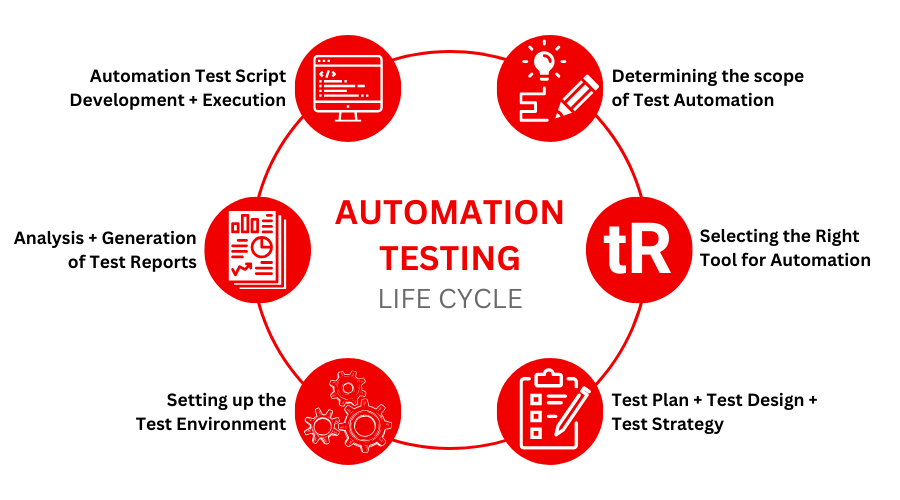Exploring the Future of Automation Testing in Software Application Advancement
Exploring the Future of Automation Testing in Software Application Advancement
Blog Article
Making Certain Success in Automation Evaluating: Key Metrics, Challenges, and Solutions Every QA Group Must Know
In the world of software high quality guarantee, the landscape of automation screening is ever-evolving, requiring a meticulous method to guarantee seamless operations. The trip to grasping automation testing is led with subtleties that require a keen eye for surveillance, evaluation, and continuous improvement. As the sector drives forward, the mission for optimal performance in automation screening stays a continuous quest, prompting QA groups to outfit themselves with the understanding and approaches crucial for accomplishment.
Significance of Secret Metrics
Recognizing the significance of vital metrics is essential for assessing the performance and efficiency of automation screening procedures. Secret metrics function as measurable steps that give useful understandings right into various aspects of the testing procedure, such as test insurance coverage, test execution time, flaw density, and examination case effectiveness. By examining these metrics, QA groups can determine bottlenecks, inadequacies, and areas for enhancement within their automation screening framework.
One vital facet of key metrics is their capacity to track progress and keep an eye on the total wellness of the testing procedure (automation testing). They allow stakeholders to make informed decisions based upon data-driven understandings, which can result in extra efficient testing approaches and better source allocation. Furthermore, key metrics can assist groups established reasonable objectives, gauge the success of automation campaigns, and demonstrate the ROI of automation screening efforts

Typical Obstacles Dealt With
Challenges frequently encountered in automation screening procedures can dramatically affect the general performance and effectiveness of QA teams. One of the major difficulties is the selection of the appropriate test instances for automation. Not all test cases are appropriate for automation, and choosing the incorrect ones can cause squandered time and sources. Additionally, keeping test manuscripts can be a challenging job, especially as the application undertakes frequent adjustments. Test script upkeep needs continual updates and adjustments to guarantee they show the existing functionality precisely. Another usual challenge is the first investment required for establishing up automation frameworks and devices. This can be a barrier for some organizations, especially smaller ones with minimal budgets. In addition, automation testing may not cover all aspects of testing, such as use and user experience testing, which still need hand-operated treatment. Overcoming these challenges needs appropriate preparation, strategic test case choice, durable maintenance processes, appropriate sources, and a clear understanding of the constraints of automation screening.
Reliable Solutions for Obstacles
To address the barriers encountered in automation screening, carrying out efficient services is important for boosting the performance and efficiency of QA teams. One essential remedy is to spend in robust training programs for QA groups to ensure they have the required abilities to successfully use automation tools. Training can link knowledge gaps, enhance understanding of automation frameworks, and boost scripting abilities, inevitably resulting in more effective test production and implementation.
One more vital remedy is to establish clear interaction channels within the QA group and with other stakeholders, such as designers and project supervisors. Efficient interaction helps in lining up expectations, sharing progression updates, and promptly addressing problems or barricades that may emerge during the automation screening process.

Tracking and Evaluation Strategies
Carrying out reliable tracking and analysis strategies is important for making certain the success and efficiency of automation screening procedures. Additionally, analyzing test results and metrics gives beneficial insights right into the quality of the software being checked and the performance of the testing technique.
One secret strategy in monitoring and analysis is making use of control panels that combine pertinent metrics and KPIs in an aesthetically accessible style. These control panels supply an extensive overview of test execution condition, examination insurance coverage, defect trends, and other important information. Consistently reviewing and analyzing these dashboards can help QA teams make informed decisions, prioritize tasks, and maximize screening efforts.
In addition, over at this website applying automated alerts and alerts based on predefined thresholds can enhance positive tracking and prompt intervention. By establishing notifies for performance variances or examination failings, teams can resolve problems promptly and stop them from escalating. On the whole, monitoring and analysis methods play a vital duty in guaranteeing the efficiency and success of automation screening efforts.
Constant Improvement Approaches
Enhancing the efficiency of this automation testing processes demands the consistent refinement of strategies and methods. One key method to boosting automation testing processes is to carry out normal reviews and retrospectives.

Conclusion
To conclude, it is critical for QA groups to comprehend the vital metrics, challenges, and options in automation imp source testing to make sure success. By carefully keeping an eye on and examining data, implementing effective services to usual obstacles, and continually improving approaches, QA teams can optimize their screening procedures and provide high-quality software items. Sticking to these methods will ultimately result in a lot more reliable and reliable automation screening techniques.
By evaluating these metrics, QA teams can recognize traffic jams, inefficiencies, and areas for improvement within their automation testing framework.
In addition, crucial metrics can help teams set sensible goals, measure the success of automation efforts, and show the ROI of automation testing initiatives.
Challenges frequently come across in automation testing procedures can dramatically influence the overall performance and efficiency of QA teams. Automation testing might not cover all facets of screening, such as functionality and individual experience testing, which still require hand-operated treatment.In final thought, it is essential for QA groups to recognize the vital metrics, challenges, and solutions in automation screening to make certain success.
Report this page